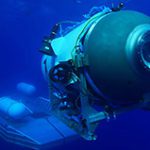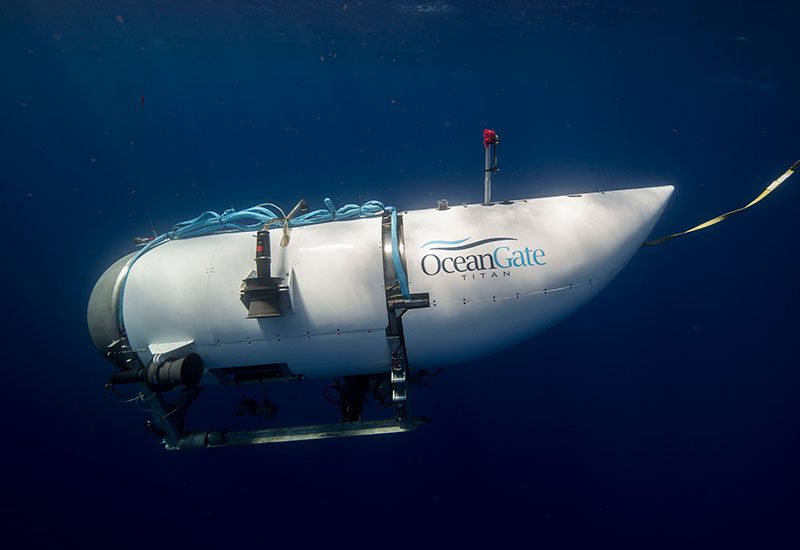 The mysterious disappearance of a commercial submersible operated by US-based company OceanGate has launched a massive search and rescue mission, shedding new light on the risks of deep-sea exploration and the technologies used to navigate the ocean’s abyss. The submersible, known as Titan, vanished during a journey to the hauntingly beautiful wreckage of the RMS Titanic, lying dormant at the bottom of the Atlantic Ocean.
The mysterious disappearance of a commercial submersible operated by US-based company OceanGate has launched a massive search and rescue mission, shedding new light on the risks of deep-sea exploration and the technologies used to navigate the ocean’s abyss. The submersible, known as Titan, vanished during a journey to the hauntingly beautiful wreckage of the RMS Titanic, lying dormant at the bottom of the Atlantic Ocean.
On Sunday, just 105 minutes into the descent, communication with the Titan ceased. With five souls on board and an increasingly ticking clock, the incident has swiftly escalated into a critical rescue operation. The submersible was declared overdue at 9.13 pm local time, triggering an intense search by the US Coast Guard. By Monday afternoon, US Coast Guard Rear Admiral John Mauger suggested that the crew could have between 70 to 96 hours of oxygen, igniting a race against time to locate the missing craft.
OceanGate, renowned for providing cutting-edge exploration experiences to high-paying guests ($250,000 per head), has found itself in the middle of an alarming situation. The company, which prides itself on making the inaccessible accessible, is now grappling with a predicament that highlights the dangers inherent in exploring the ocean’s mysterious depths.
The Titan, an engineering marvel, is capable of plunging to 4,000 meters beneath the ocean surface, a little more than the Titanic’s resting place at approximately 3,800 meters. The 22-foot submersible operates at a speed of 3 knots or about 5.5 kilometres per hour and is equipped with a viewport for passengers, cameras for a broader view, and a real-time hull health monitoring system to ensure its carbon fibre hull’s integrity.
The craft’s hull, a marvel of composite titanium and carbon fibre, must withstand pressure nearly 380 times that at the surface of the earth. An ingenious mechanism, known as a strain gauge, monitors pressure, tension, and weight changes, essentially the ‘vital signs’ of the submersible, providing a continuous health check during deep-sea dives.
However, the question remains – what went wrong? The Titan uses an acoustic link for communication with its surface vessel. This sophisticated setup allows for underwater positioning and the exchange of short text messages between the submersible and the surface vessel. The loss of communication raises the ominous possibility of a power failure. Ideally, a backup power source should be in place to maintain emergency and life support equipment, but the details of such a provision on Titan remain unclear.
The rescue operation has assembled an array of resources, including aircraft, submarines, and sonar buoys, listening for the emergency distress beacons. Weather conditions, however, pose a significant challenge, narrowing the search window.
In the best-case scenario, the Titan may have simply lost power. An inbuilt safety system could initiate a rapid ascent to the surface by dropping additional weights. A less favourable situation would see the submersible lying powerless at the ocean’s bottom. The nightmare scenario, a catastrophic failure of the pressure housing, could result in implosion, a risk inherent to all submersibles given the extreme deep-sea pressures.
Another possibility that cannot be ruled out is an onboard fire, perhaps sparked by an electrical short circuit, which could incapacitate the electronic systems necessary for navigation and control, not to mention the potential threat to the crew and passengers.
The incident underscores the inherent risks of manned deep-sea exploration and raises questions about the ethical considerations of deep-sea tourism. The relative merits of manned versus unmanned submersibles, as well as robotic vehicles, are likely to come under intense scrutiny following this episode. While the work may be compromised if an unmanned vehicle is lost, at least human lives aren’t at stake. This incident serves as a grim reminder of the unforgiving nature of the ocean’s depths, even as we continually strive to unveil its secrets.
Written by: Christine Nguyen


















